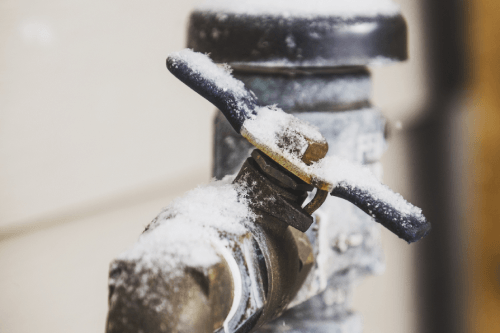Critical Strategies for Avoiding Frozen Pipes in Winter
Critical Strategies for Avoiding Frozen Pipes in Winter
Blog Article
How do you really feel in regards to How to Prevent Your Pipes From Freezing?

Winter can ruin your plumbing, specifically by freezing pipes. Below's how to stop it from occurring and what to do if it does.
Intro
As temperature levels decline, the danger of icy pipes rises, potentially bring about expensive repairs and water damage. Recognizing how to stop icy pipes is crucial for home owners in cold environments.
Prevention Tips
Protecting prone pipelines
Cover pipes in insulation sleeves or use warmth tape to shield them from freezing temperature levels. Concentrate on pipelines in unheated or exterior areas of the home.
Heating strategies
Keep interior spaces properly heated up, specifically locations with plumbing. Open up cabinet doors to allow warm air to circulate around pipelines under sinks.
How to identify icy pipelines
Seek lowered water flow from taps, unusual odors or sounds from pipes, and visible frost on revealed pipes.
Long-Term Solutions
Structural adjustments
Take into consideration rerouting pipelines far from outside walls or unheated locations. Add added insulation to attics, cellars, and crawl spaces.
Upgrading insulation
Buy top notch insulation for pipes, attic rooms, and walls. Proper insulation assists keep constant temperatures and reduces the risk of icy pipelines.
Shielding Outside Pipes
Yard tubes and exterior faucets
Separate and drain pipes garden tubes before winter months. Set up frost-proof faucets or cover outside faucets with insulated caps.
Recognizing Icy Pipes
What triggers pipes to ice up?
Pipelines ice up when revealed to temperature levels listed below 32 ° F (0 ° C) for prolonged durations. As water inside the pipelines freezes, it expands, taxing the pipe wall surfaces and potentially creating them to rupture.
Risks and problems
Icy pipelines can bring about water system disturbances, home damages, and pricey repairs. Ruptured pipelines can flooding homes and create extensive architectural damages.
Indicators of Frozen Pipeline
Determining frozen pipes early can stop them from rupturing.
What to Do If Your Pipelines Freeze
Immediate actions to take
If you presume frozen pipes, maintain taps available to relieve pressure as the ice thaws. Use a hairdryer or towels soaked in warm water to thaw pipes gradually.
Final thought
Stopping icy pipelines calls for aggressive actions and quick feedbacks. By recognizing the reasons, signs, and preventive measures, property owners can secure their plumbing throughout cold weather.
5 Ways to Prevent Frozen Pipes
Drain Outdoor Faucets and Disconnect Hoses
First, close the shut-off valve that controls the flow of water in the pipe to your outdoor faucet. Then, head outside to disconnect and drain your hose and open the outdoor faucet to allow the water to completely drain out of the line. Turn off the faucet when done. Finally, head back to the shut-off valve and drain the remaining water inside the pipe into a bucket or container. Additionally, if you have a home irrigation system, you should consider hiring an expert to clear the system of water each year.
Insulate Pipes
One of the best and most cost-effective methods for preventing frozen water pipes is to wrap your pipes with insulation. This is especially important for areas in your home that aren’t exposed to heat, such as an attic. We suggest using foam sleeves, which can typically be found at your local hardware store.
Keep Heat Running at 65
Your pipes are located inside your walls, and the temperature there is much colder than the rest of the house. To prevent your pipes from freezing, The Insurance Information Institute suggests that you keep your home heated to at least 65 degrees, even when traveling. You may want to invest in smart devices that can keep an eye on the temperature in your home while you’re away.
Leave Water Dripping
Moving water — even a small trickle — can prevent ice from forming inside your pipes. When freezing temps are imminent, start a drip of water from all faucets that serve exposed pipes. Leaving a few faucets running will also help relieve pressure inside the pipes and help prevent a rupture if the water inside freezes.
Open Cupboard Doors
Warm your kitchen and bathroom pipes by opening cupboards and vanities. You should also leave your interior doors ajar to help warm air circulate evenly throughout your home.

Do you really like reading about Prevent Frozen Pipes ? Create feedback down below. We'd be happy to listen to your feelings about this review. We hope to see you back again in the future. Liked our blog posting? Please quickly share it. Help somebody else check it out. Thank-you for going through it.
Need Help? Hire Us Now! Report this page